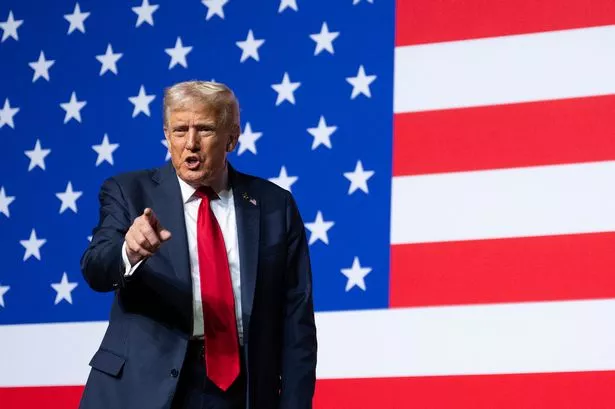President Donald Trump recently convened with senior military commanders at a base near Washington, D.C., where he emphasized the United States’ military capabilities in response to perceived threats from Russia. During the meeting, Trump highlighted the deployment of a nuclear submarine, which he described as “the most lethal weapon ever made.” He asserted that this submarine is undetectable, reinforcing the U.S. commitment to national security amid rising tensions.
The meeting, which included hundreds of military officials from various branches, was notable for its unusual nature, according to Italian Adm. Giuseppe Cavo Dragone, the chair of NATO‘s Military Committee. Dragone remarked that in his 49 years of service, he had never witnessed such a gathering. This statement adds weight to the significance of the discussions held at the event, especially as Trump suggested potential military actions in U.S. cities to address what he termed the “invasion within.”
Prior to the meeting, Trump warned that he would “fire” any military leaders he deemed unsatisfactory, indicating a strong desire to align military leadership with his administration’s objectives. Vice President JD Vance attempted to downplay the event, suggesting it was overblown by the media and asserting that it was not uncommon for generals to meet with senior officials.
The backdrop of this meeting includes growing concerns about a possible nuclear conflict with Russia. Journalist Melinda Crane noted that Trump has expressed heightened anxiety about nuclear warfare. This sentiment may have been intensified by his engagements with world leaders, including a recent meeting with Ukrainian President Volodymyr Zelenskyy at the United Nations General Assembly. After this encounter, Trump shifted his stance regarding the Russia-Ukraine war, now asserting that Ukraine has the potential to reclaim lost territories, a notable departure from his previous viewpoint that suggested a lack of favorable conditions for Ukraine.
The timing of the meeting in Quantico was unexpected, as confirmed by Sean Parnell, a top Pentagon spokesperson, who refrained from providing further details. When questioned by reporters later in the day, Trump seemed unaware of the gathering’s specifics, stating he would attend if requested but questioning why it was being treated as a significant event. He later characterized the meeting as an opportunity to discuss positive developments in U.S. military operations and overall readiness.
As global tensions continue to escalate, the implications of Trump’s assertions about military readiness and nuclear capabilities could resonate far beyond the meeting room, shaping perceptions of U.S. foreign policy and defense strategies in the years to come.
